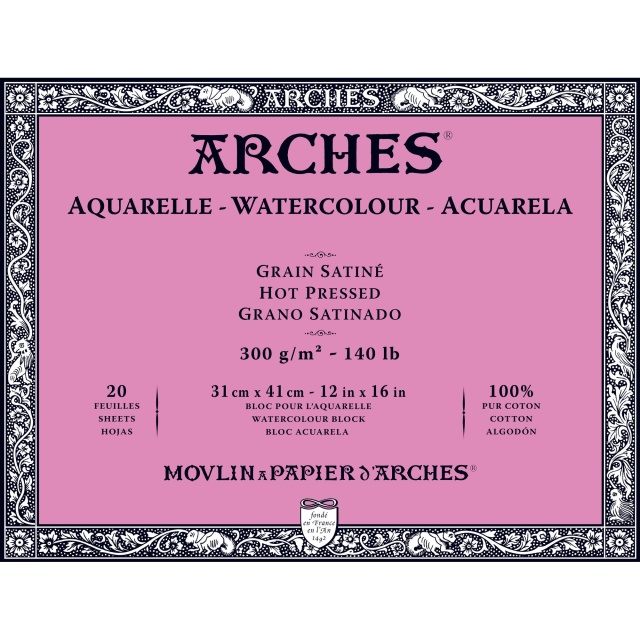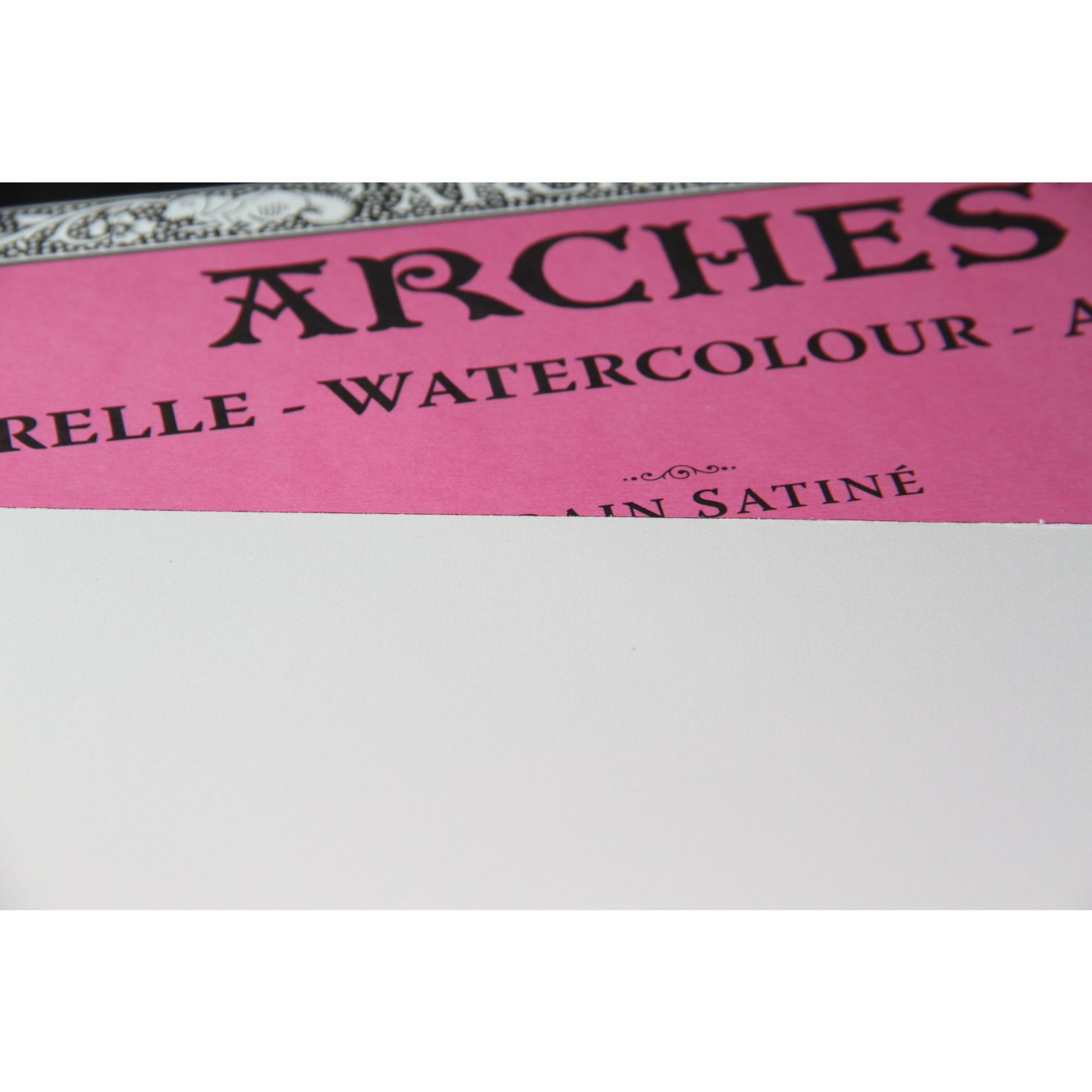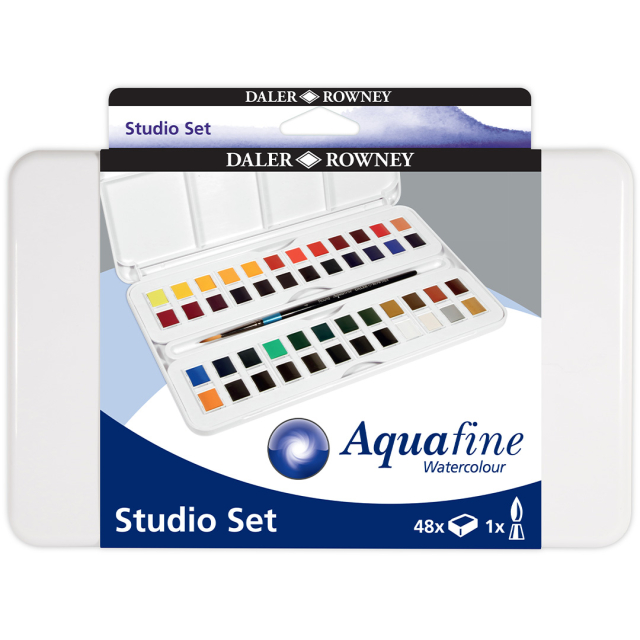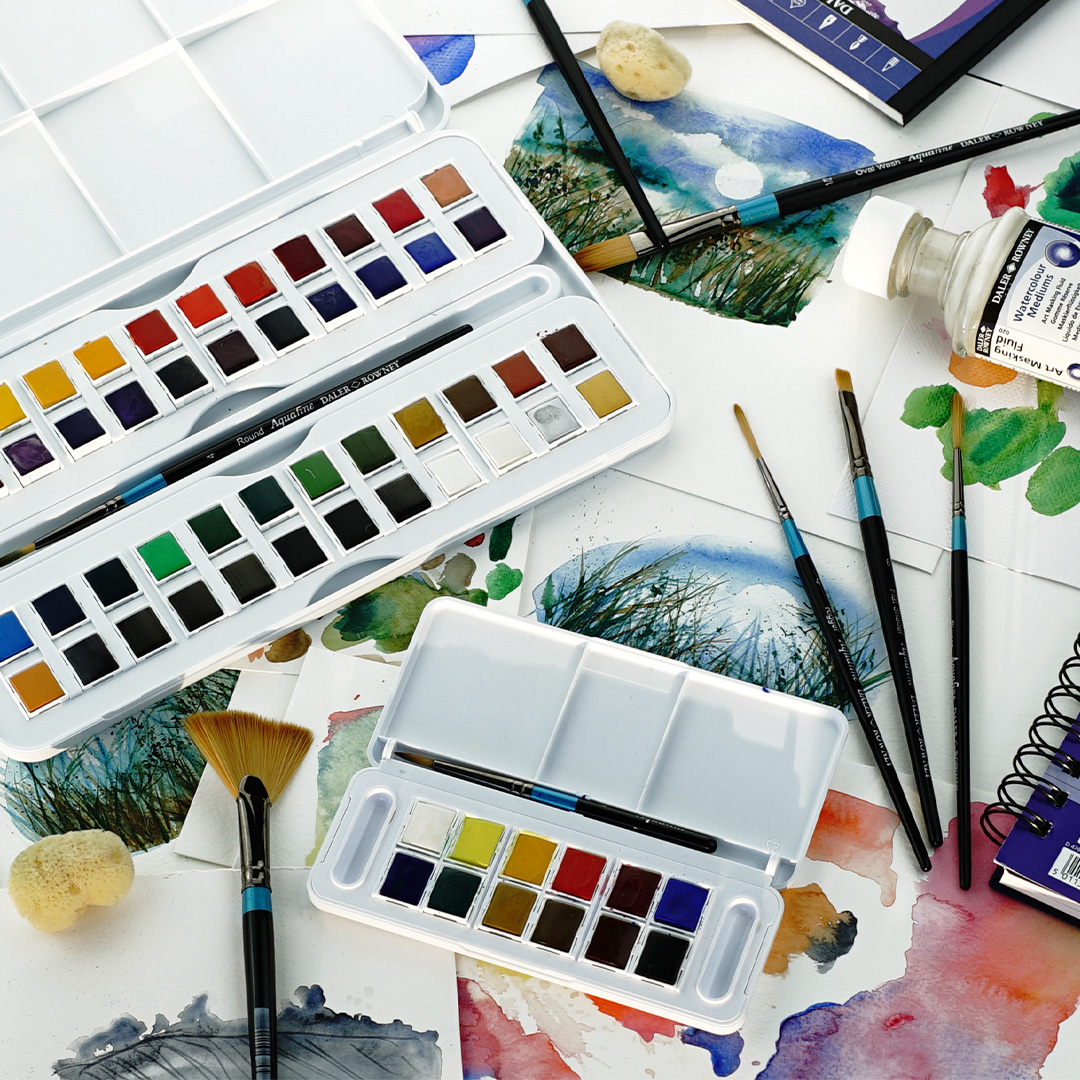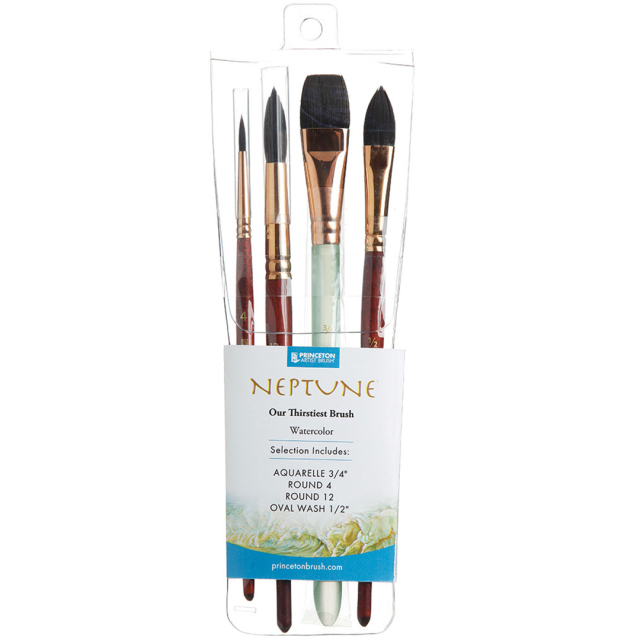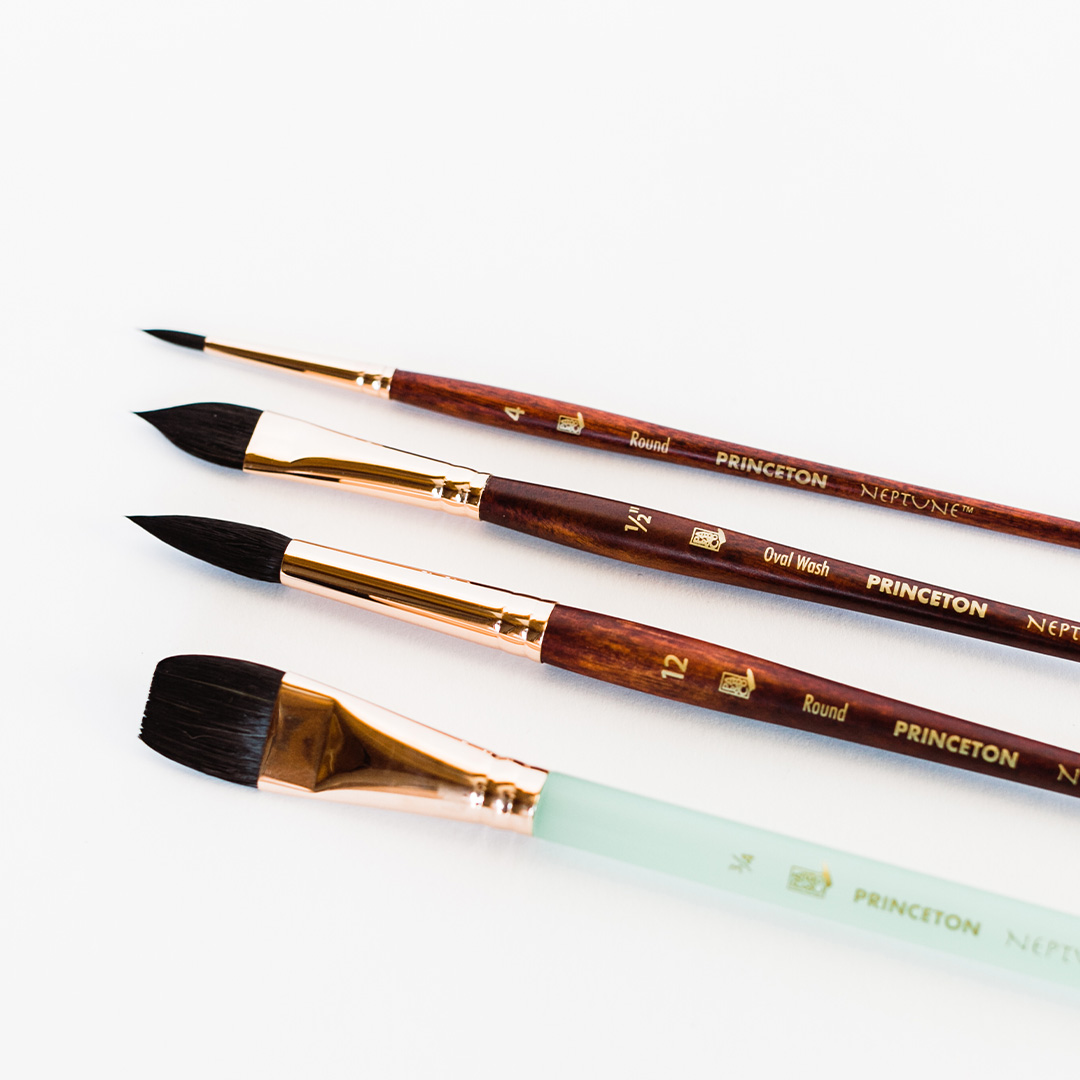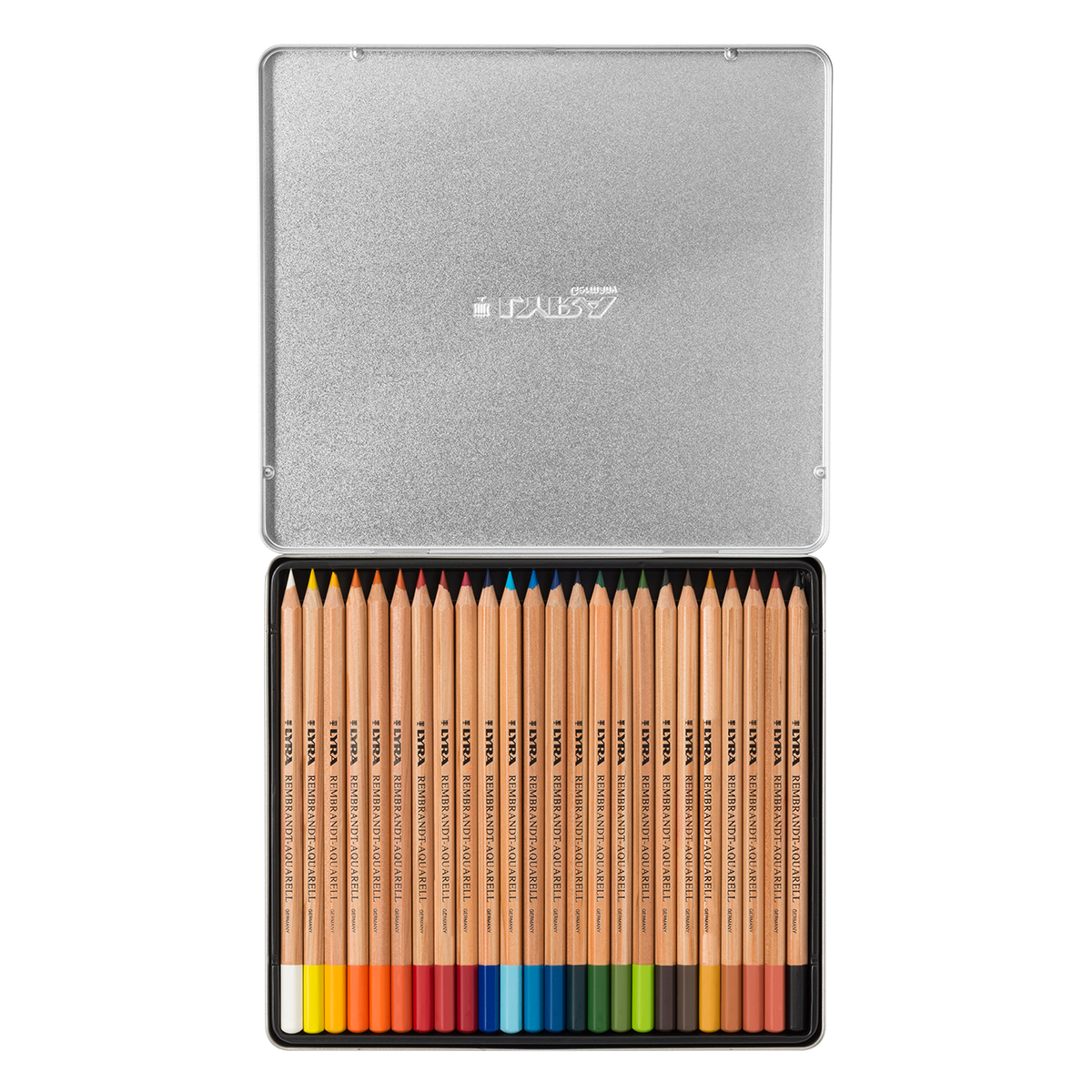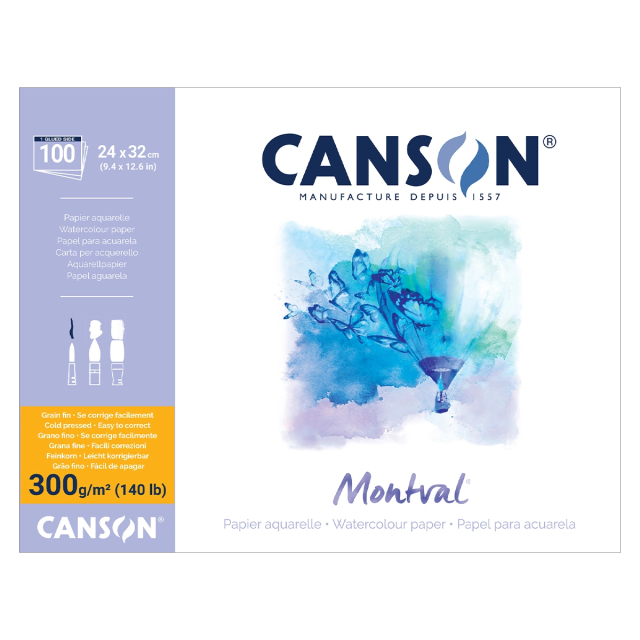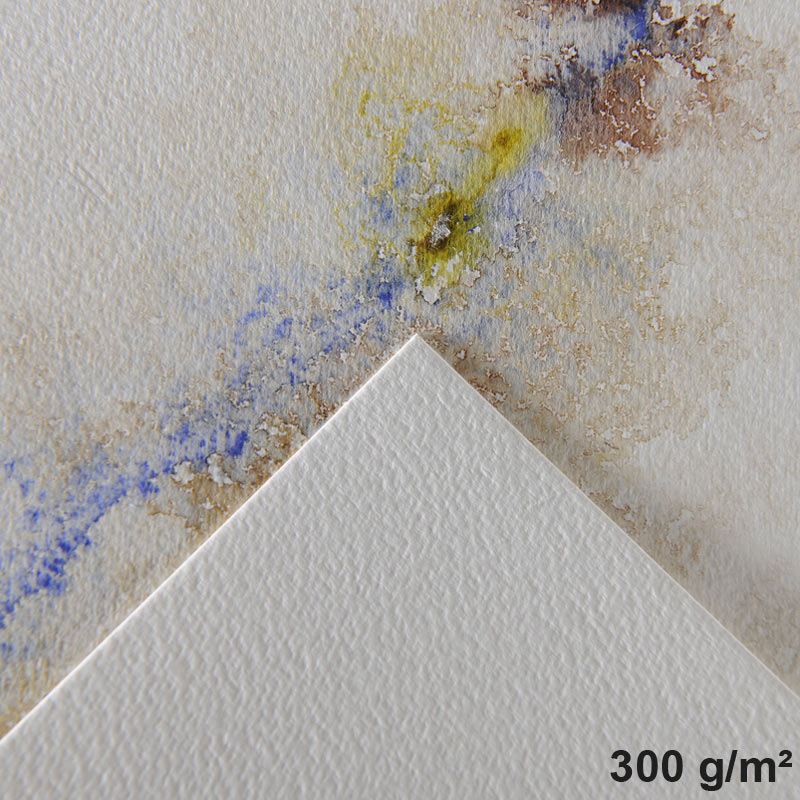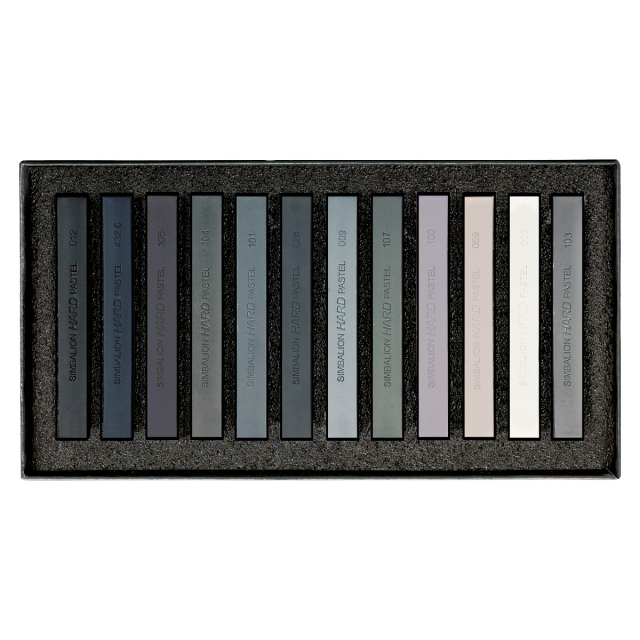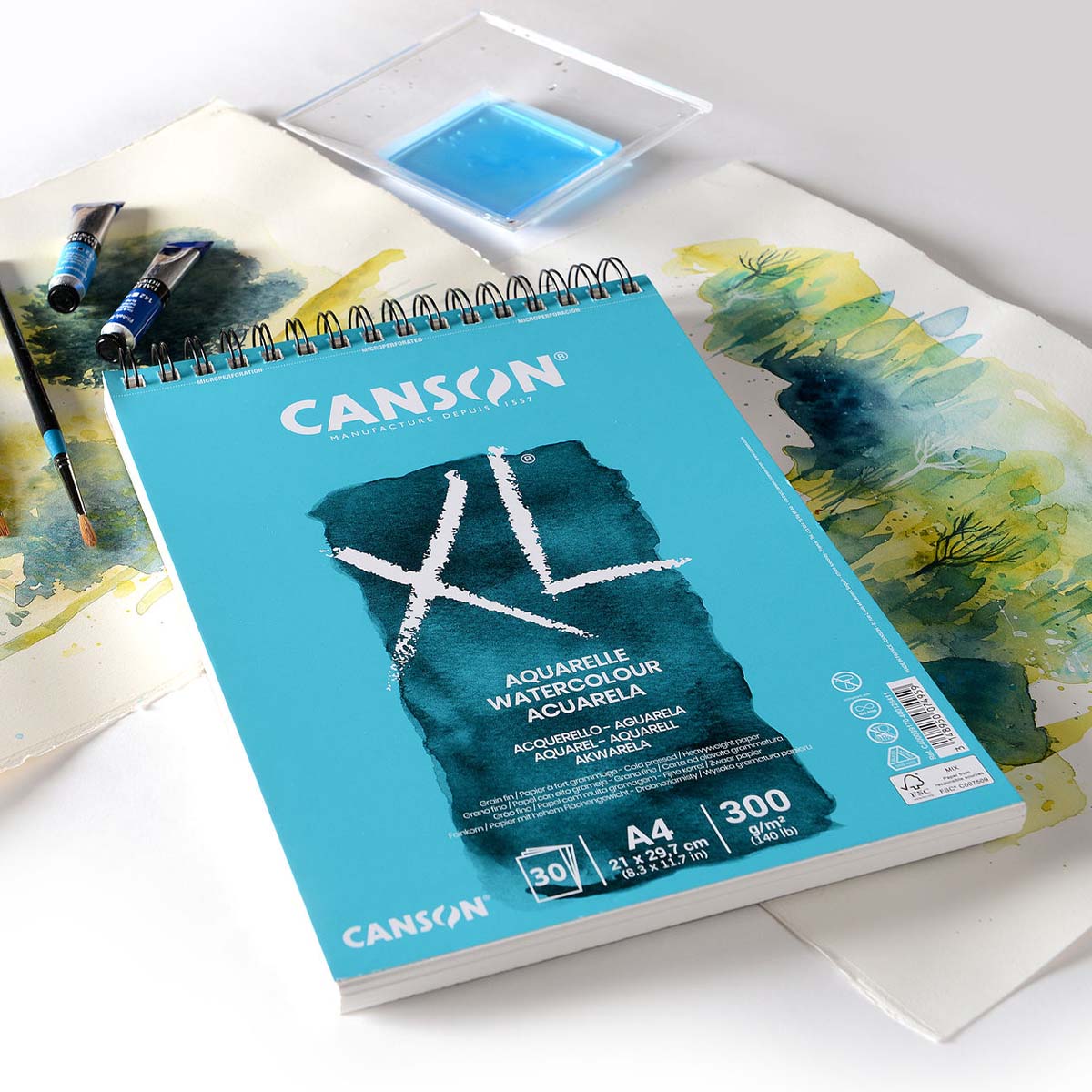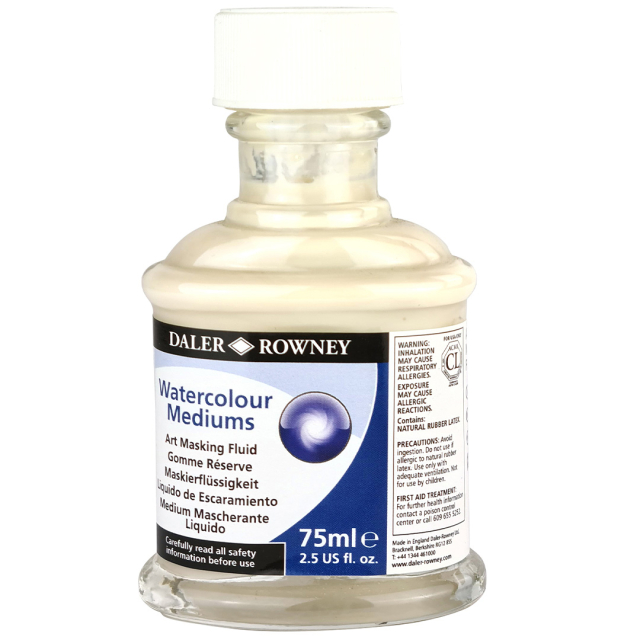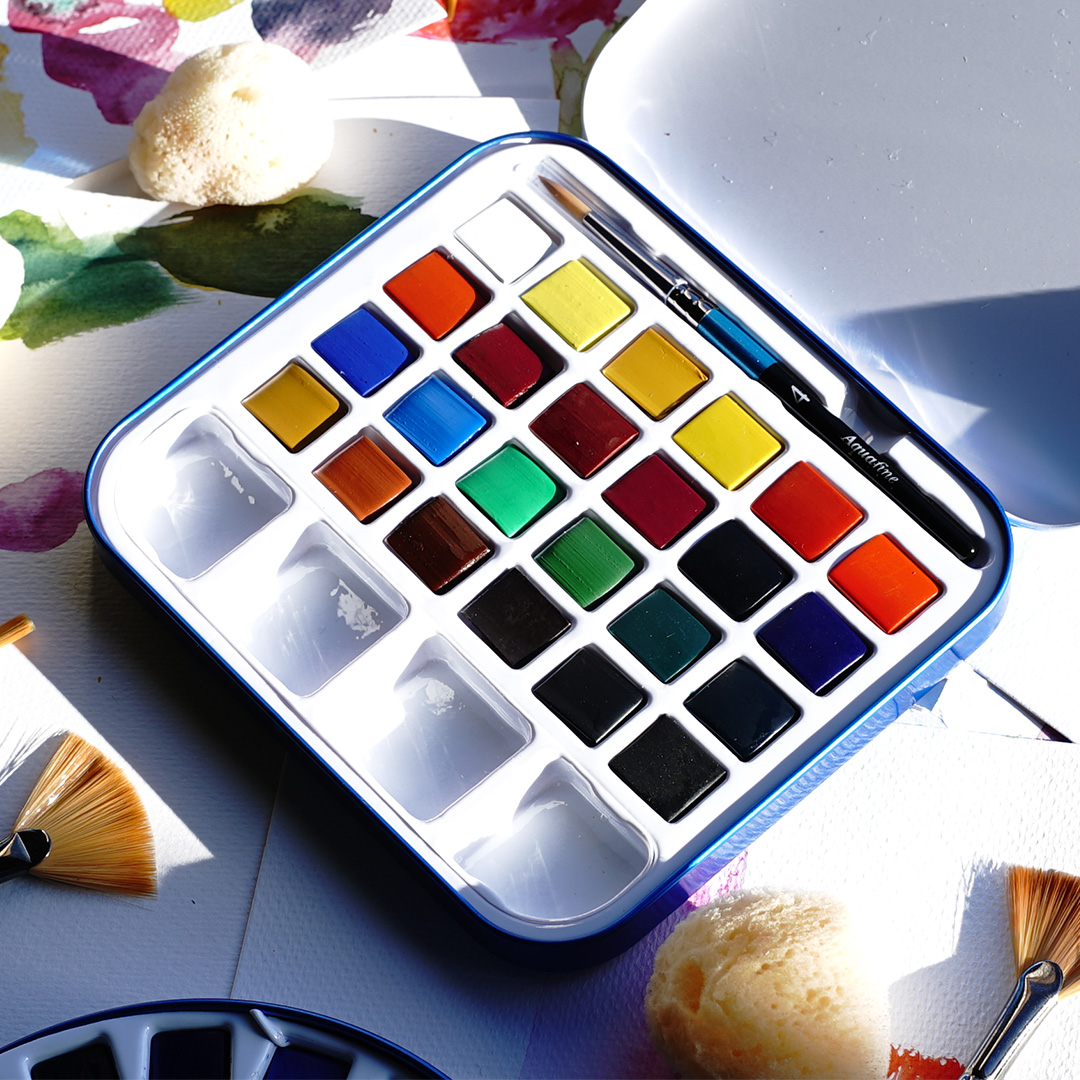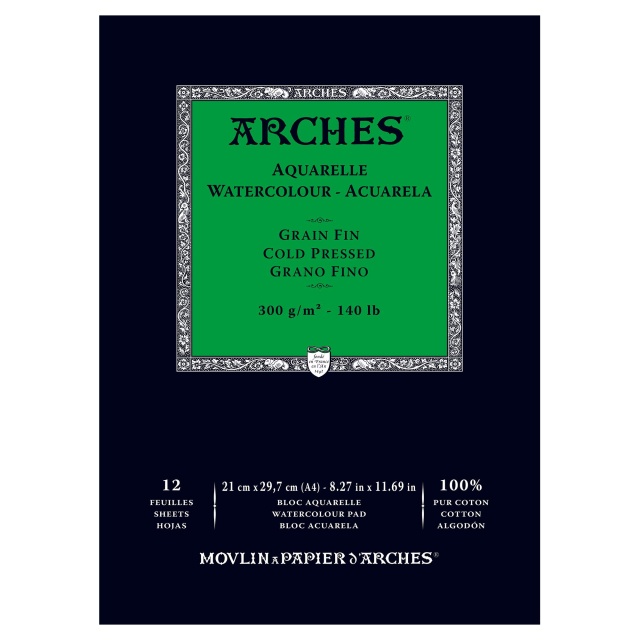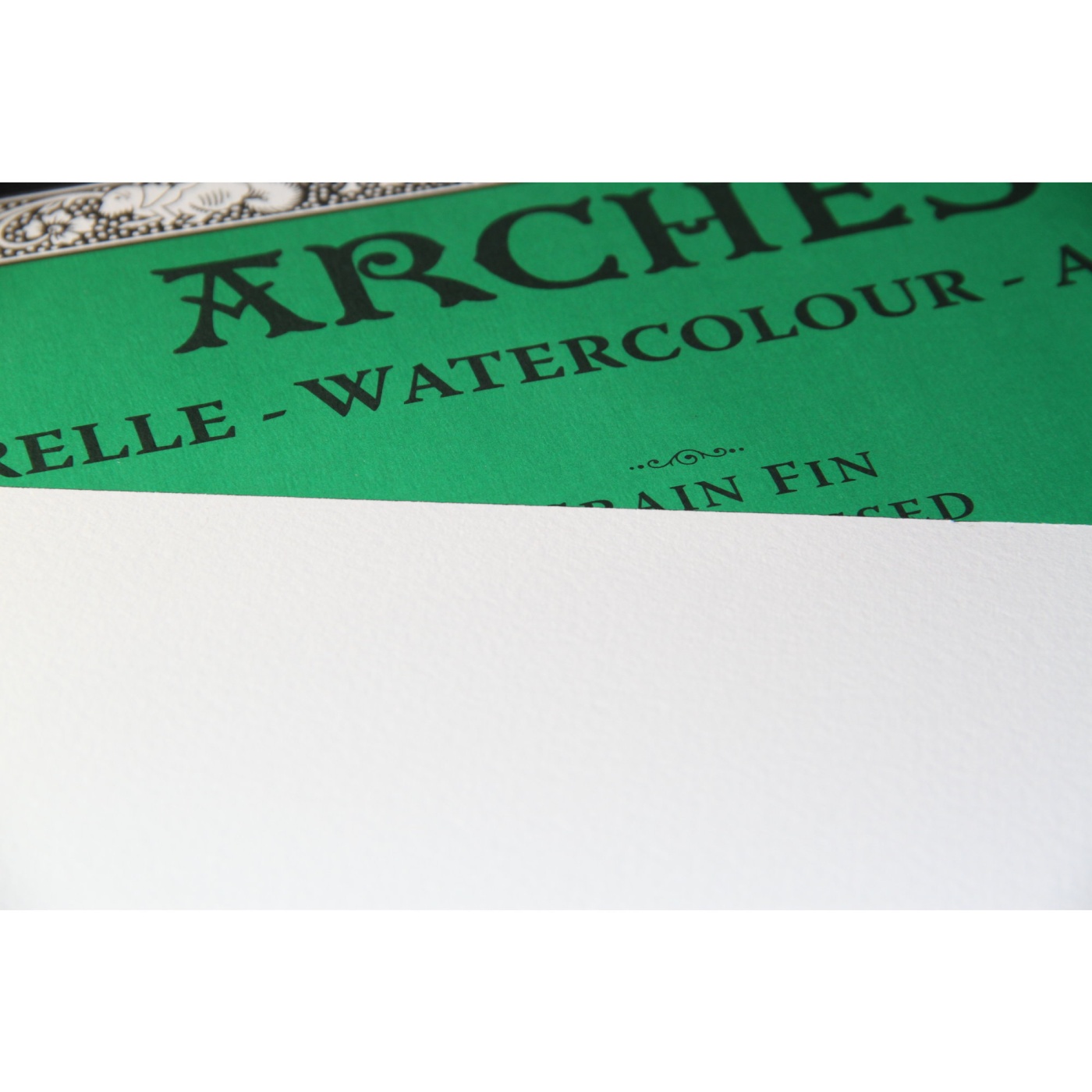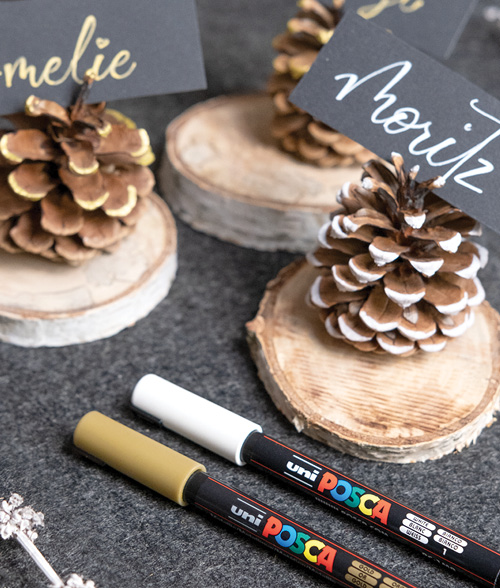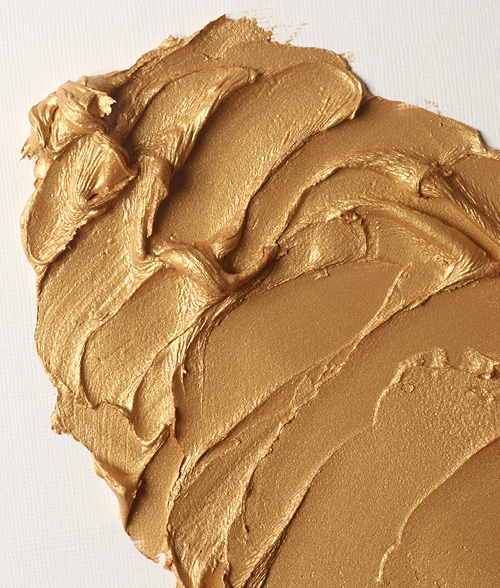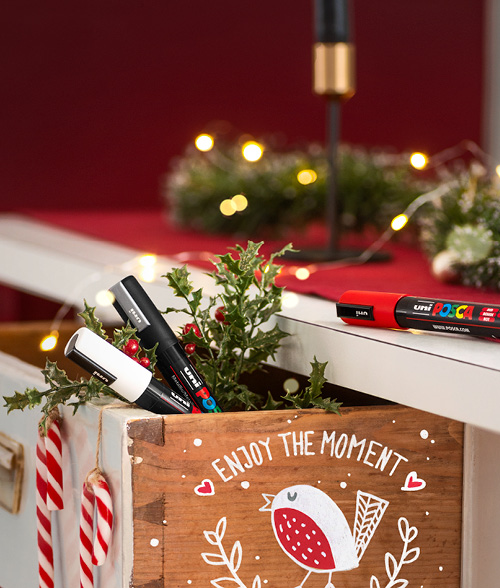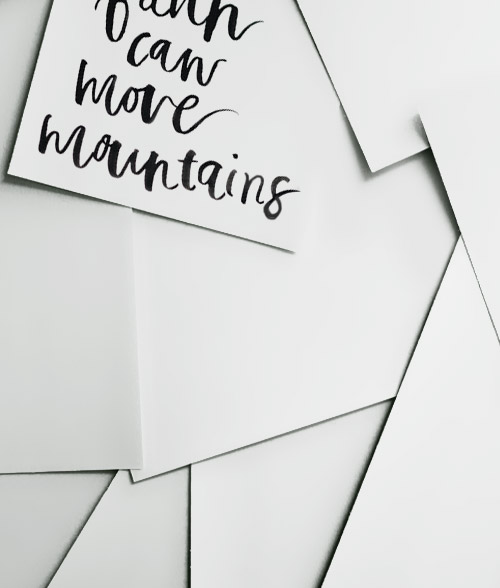Petter Alexis Askergren – Many know him as the rapper and songwriter. But he is also a watercolourist and artist. Both forms of expression have shared Petter's time and commitment over the years, but today the focus is on watercolour. We dive deep into everything from finding your style to the enthusiasm for masking fluid and passing on creativity within the family. What ignites the creative spark and which materials are currently in favour?
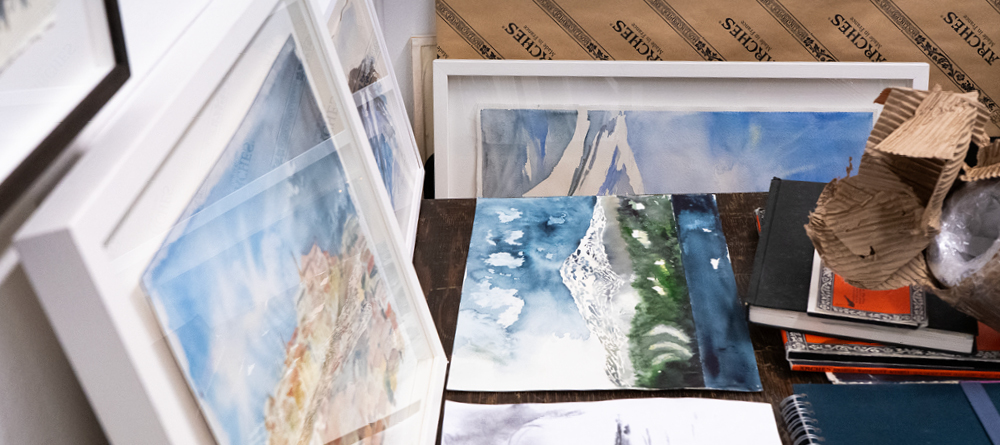
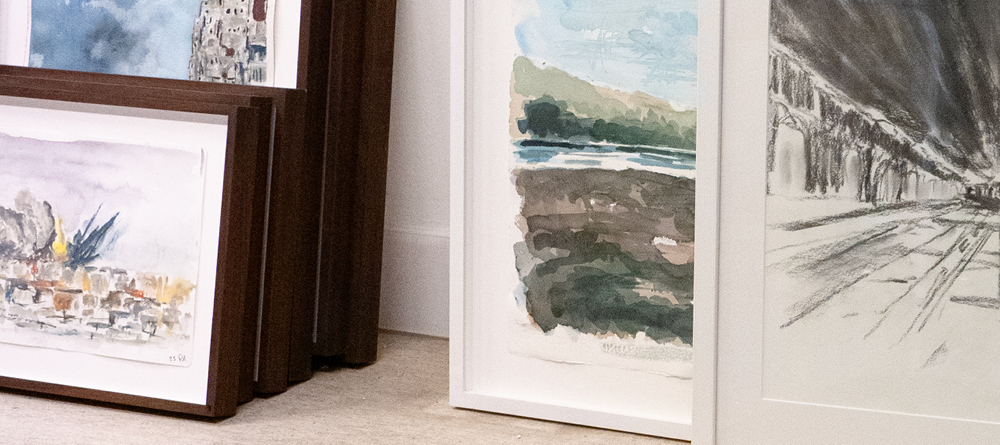
What made you start painting with watercolours?
It’s a long story, but I’ll try to keep it as brief as possible. In my family, sport wasn’t really a thing – art was. My father was an architect, and back then there were no computers, so all architects needed artistic training. Watercolour was something my dad worked with a lot in his profession, for example, when he wanted to show what a building looked like and how the light fell upon it. I didn’t have parents who would drive me to football practice, but if I wanted art materials or brushes, I’d always get them. My father also attended Gerlesborgsskolan and was greatly inspired by an artist named Arne Isacsson. When he painted with watercolours during the summers on the west coast, my sister and I would paint as well.
" I had nine hours of art a week in the humanities programme "
I thought drawing, painting, and especially comics were fun and exciting. Then I quickly got into graffiti. I was good at two things: sports and art. When I started at Södra Latin, my top choice was to go for the social arts programme, but I didn’t get in because my grades weren’t high enough. So I ended up in the humanities. But when we realised I was struggling with writing and was in a language course that included Chinese, Classical Greek, and Latin, my mum swapped all the subjects for me. This meant I had nine hours of art a week in the humanities programme. I even had a ceramics club, which was amazing. It’s something most people don’t know about me. Art has always been there. My sister went to Nyckelviksskolan, and the idea was that I’d apply there as well. But then I started working, and music took over much more. But I never stopped drawing and painting.
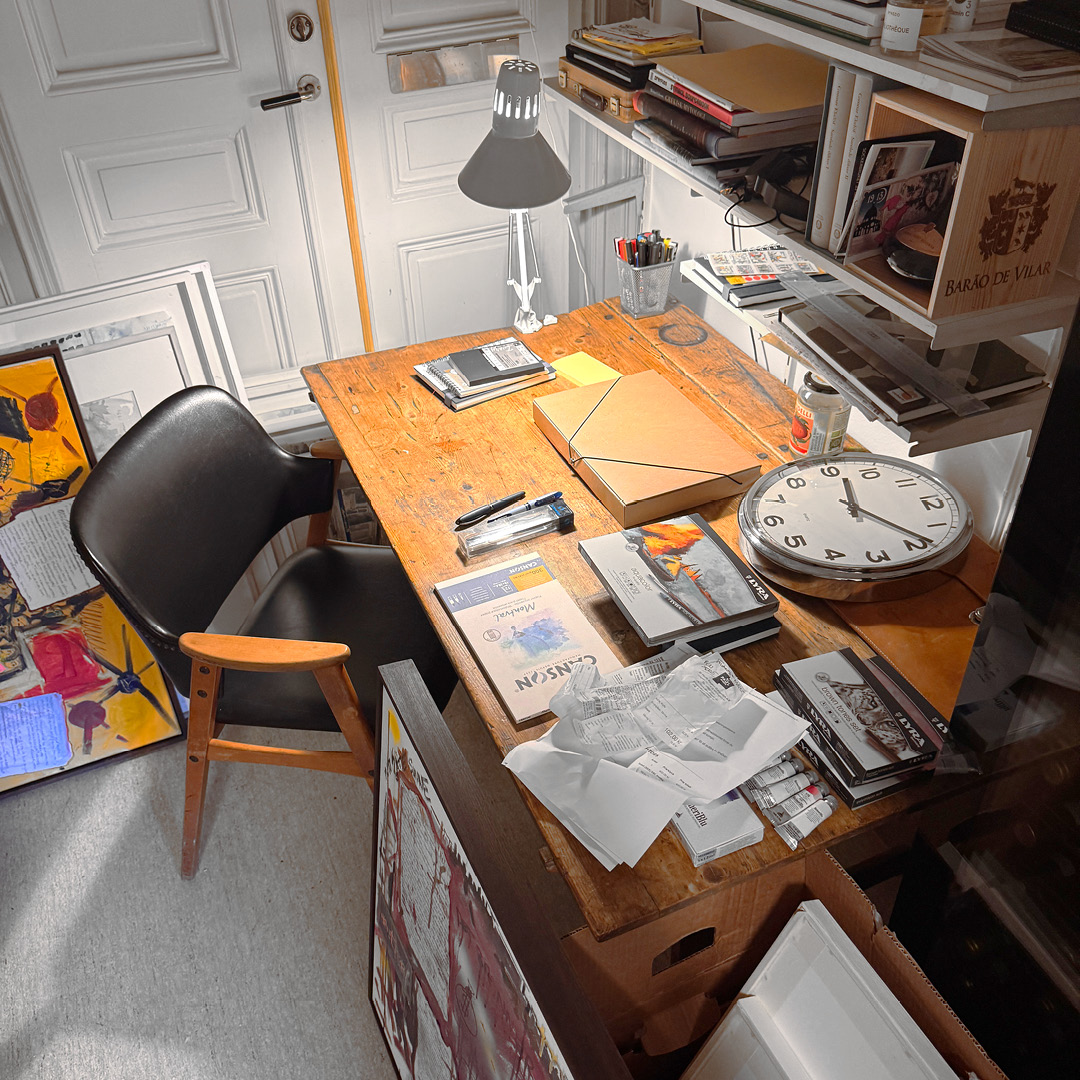
How does the creative process in music differ from painting?
The difference is that in the creative process of painting, there are no rules I have to adhere to. There’s no digital platform like Spotify, and there are no charts. I don’t belong to any artistic clique or establishment, I just do my own thing. That’s why I feel incredibly free when I’m painting. It’s so much fun! What I find interesting about watercolour is that it suits my hyperactivity perfectly. It can go really well, or it can go horribly wrong. Sure, you can control the pigment, but it’s also exciting to see what happens. There’s such a surprise element with watercolour, I think.
What inspires you?
I get inspired by all sorts of things. I’ve worked a lot with texts in watercolour. I mix a lot of techniques and don’t worry too much about what’s right or wrong. I might start smudging with charcoal on a watercolour or use crayons or whatever. I made an album called Hälsa Stockholm, where I decided I would paint the covers for all the songs and then add the lyrics to them. That resulted in a ton of paintings. I selected 13 songs and 13 paintings, but I ended up creating many more. We then held an exhibition at a friend’s restaurant in Gamla Stan. We created different rooms, for example, a wine-themed room filled with paintings. The inspiration for that came a lot from motifs of Stockholm. But I paint all sorts of things that come to mind. I was really moved by what’s happening in Gaza, so that led to a lot of paintings around that theme.
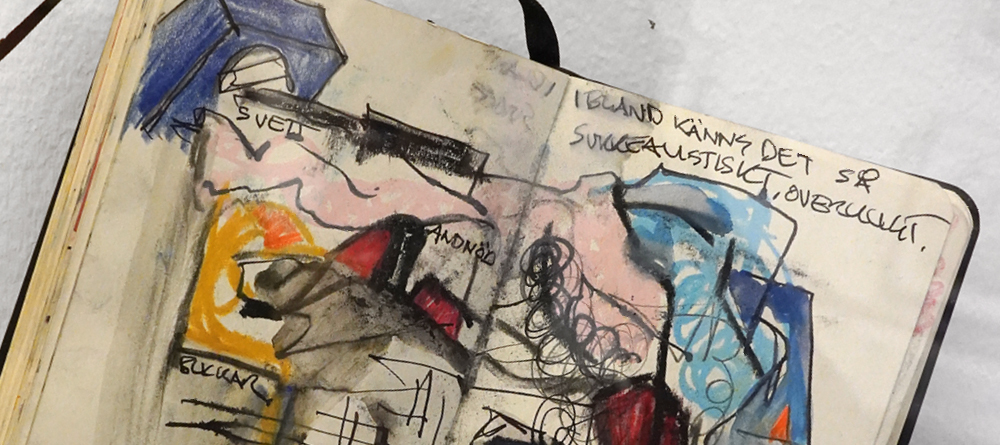
But how does one find inspiration?
If you want to be inspired, it's important to take a lot of photos. Today, with mobile phones, it’s easy to capture moments. I also think you shouldn't be overly picky or afraid of making mistakes. It’s really about being free and unrestrained. Sometimes, I feel that the best songs are those that aren’t overly explicit and leave room for interpretation. I might have had my own meaning when I wrote it, but it can be understood in a new way by someone else. I always carry a sketchbook with me when I travel. Last summer, this led to an exhibition consisting of plexiglass boxes, each containing a sketchbook that you can change the spread on.
How do you decide on a motif?
It’s a bit like when I make music. I enter the studio, hear the music, and feel, "This is good music; I like this." Then, words start flowing out of me, and from there, a theme develops. I think it’s similar with watercolour as soon as I put the pen to paper. Sometimes, I create albums on my phone filled with inspirational images and look through them. But often, I find I just go straight into it.
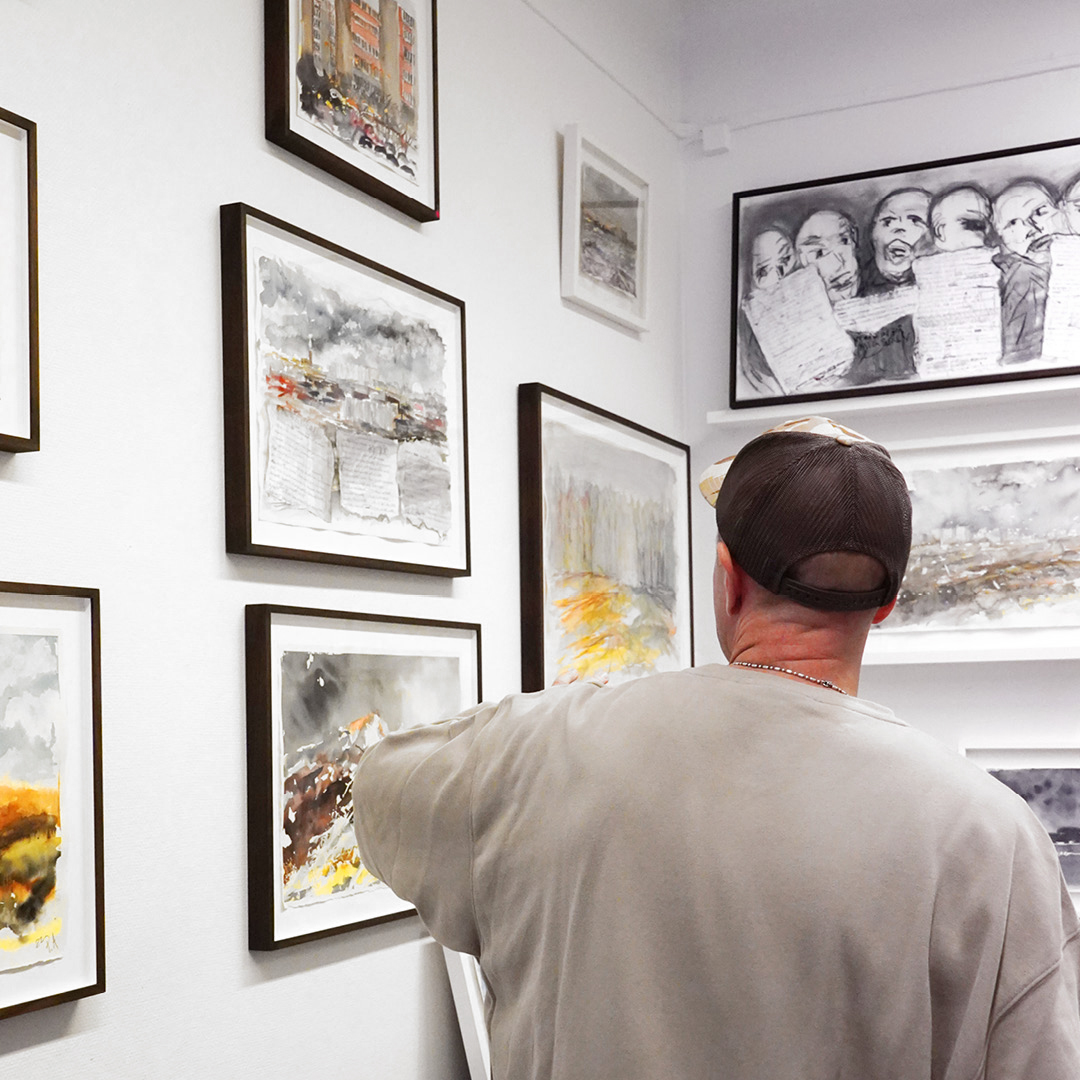
And how do you know when you're finished with a motif?
That’s the thing with watercolour. I feel like with oil paint, you can keep working on it indefinitely. But with watercolour, it’s really easy to overdo it, to paint too heavily. I talk about this a lot with my sister. We send pictures to each other, and she’ll say, “No more, leave it as it is, don’t do anything else, let it be!” So, I try to be sparing. It can’t be too sparse either, but I just have this feeling inside me when it’s finished.
" I believe that all rules are somehow meant to be broken "
How do you find your style?
I compare everything to music, and I talk a lot with young artists about how, for commercial purposes, it’s important to find your own platform—your own thing to stand on and believe in. What’s crucial for me is not to feel restricted. That’s why I think it’s really important to experiment. When I was a bit insecure, I probably tried to do things to resemble something else, but I’m not in that place anymore. Just like with music, it’s important for me to create something I genuinely enjoy. If you like it too, that’s a bonus. It’s the same with painting and drawing. Are we doing it to show someone? Forget about that. First, think of it as something you enjoy and that excites you. Let it inspire you to create more.
There's nothing wrong with painting the same motif 70,000 times because you want to try different colours or whatever it may be. I often end up with motifs featuring views. And that's because I'm completely obsessed with rooflines and large cityscapes. It's the best thing I know. That block, for example, when we stand up in Sacré-Cœur and look out over Paris, it is incredibly impressive. The colours are basically just blue and grey on the rooftops, but it also becomes really beautiful and harmonious. There, you can just keep messing around, testing and testing, and mixing all sorts of things. Crayons, watercolours, water. Just go for it. I believe that all rules are somehow meant to be broken. That's how I've always thought in music, and it seems to work quite well for me.
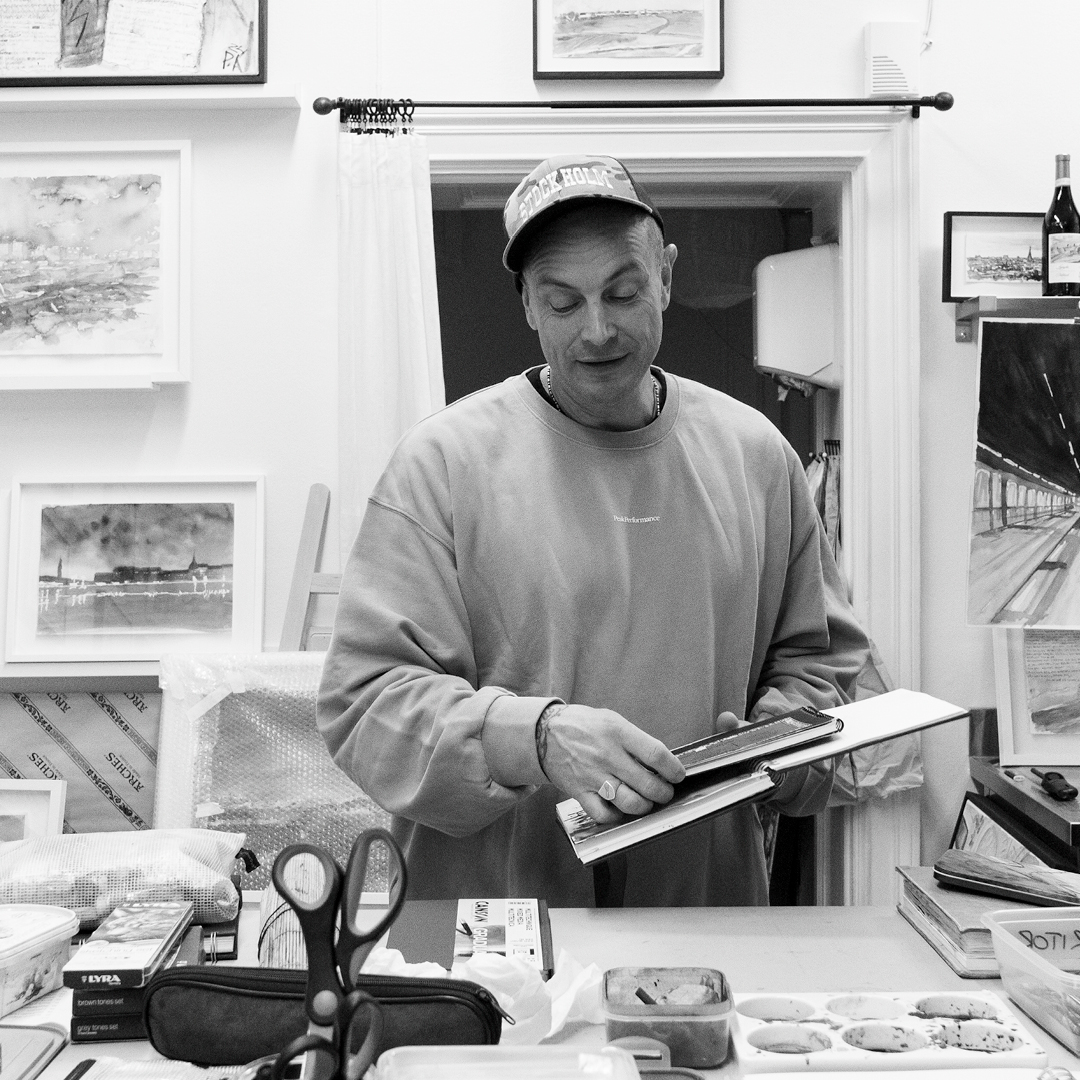
What’s most important to you when it comes to materials?
In watercolour, my initial focus was on the thickness of the paper. But now, I’m experimenting more with different materials, like crayons. I haven't used crayons since I was very young, but I find them really fun. I mix them into watercolours to enhance lines or just apply them directly with a brush. Those colour pencils from Lyra are great as well; I think they’re an excellent complement to watercolour. I've also worked with tubes, but that usually requires me to stay in one place for a few days to mix my colours properly. One important thing for me is that it shouldn’t be such a big project; it should be fairly easy to access my materials.
What weight do your papers have now?
I usually use 300, which I find quite suitable. But I also really enjoy splurging on the top-quality stuff, like 600, because it’s so substantial. I’ve experimented with all sorts of sizes. For instance, you can buy a larger sheet and cut it up into smaller pieces. That works really well and looks great.
Do you have any product recommendations that our customers should try?
I work a lot with masking fluid, which I find really exciting. I use the one from Aquafine and it has a bit of a funky smell, but it’s definitely worth it. It’s great for highlighting white areas. What I do is apply it generously, and then when I’ve painted over it and feel it's finished, I remove the masked sections. This reveals the white beneath, creating a sort of light effect. I go through phases with it; there was a time when I was almost addicted to it. It’s fun because it really creates a wow effect. I’ve seen many artists in Sweden who are absolute masters at it and probably have a brilliant system, using bits of tape to create almost cubist effects. I’m probably a bit more wild and crazy when I use it!
" Writing down tasting notes and painting something from the location "
Is there any technique you’d like to work on more?
Right now, I’m really into these Lyra crayons. They’re absolutely magical, so I’ve been working a lot with them. I also have a dream of painting more with oils and getting to grips with that technique, as I don’t really have a solid understanding of it yet. My sister and I talk a lot about sketching every day, for at least 15 to 20 minutes, just like you’d go to the gym to train.
So, incorporating it into your daily routine?
Yes, exactly. Since I also work as a wine importer and have been doing that for many years, I attend a lot of wine tastings. I’ve realised that a great practice is to write down tasting notes and paint something from the location. Because then, when you look back at it a year later, the memory is so much stronger because you created that little visualisation. And it doesn’t have to be a grand piece of art; it can just be something small. That’s enough.
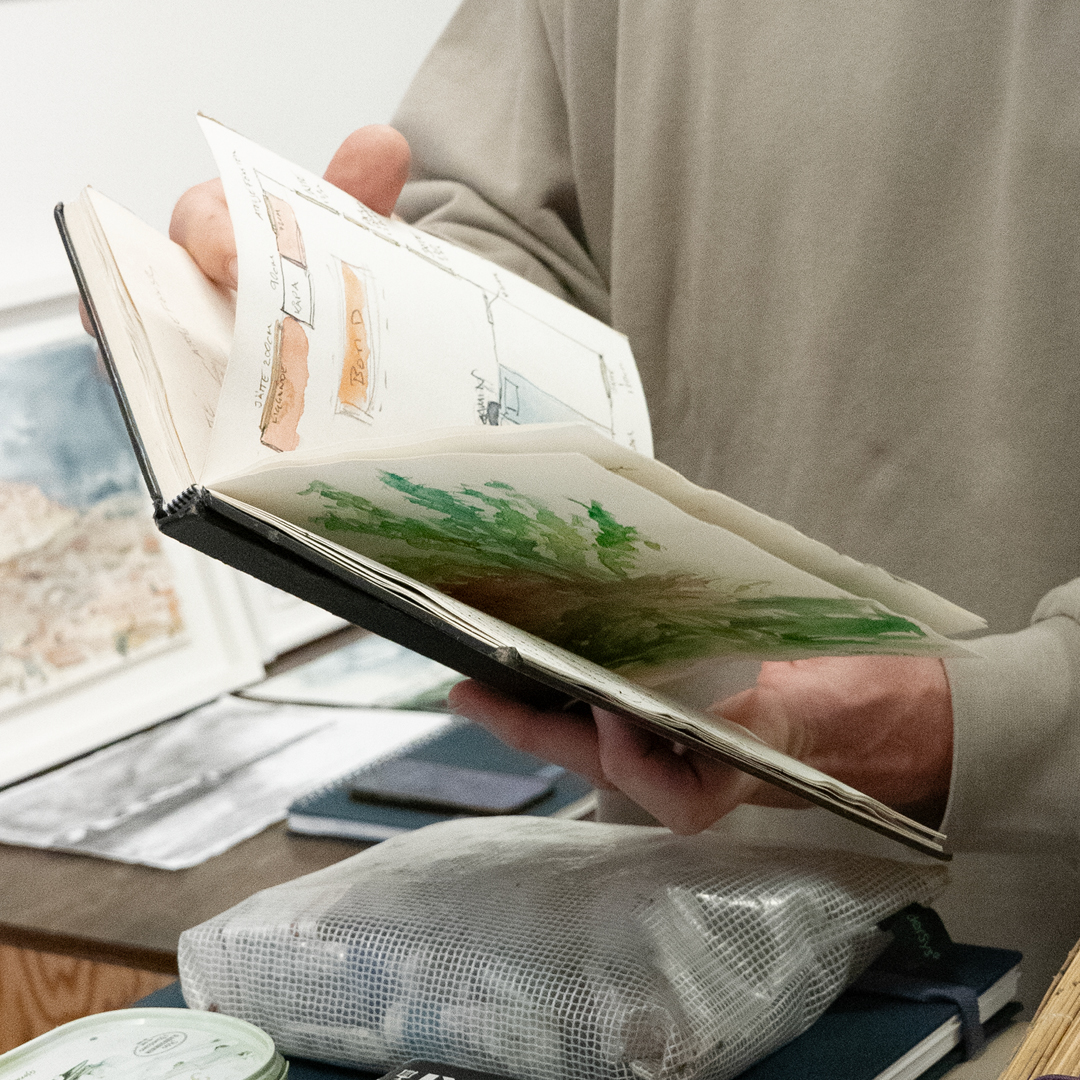
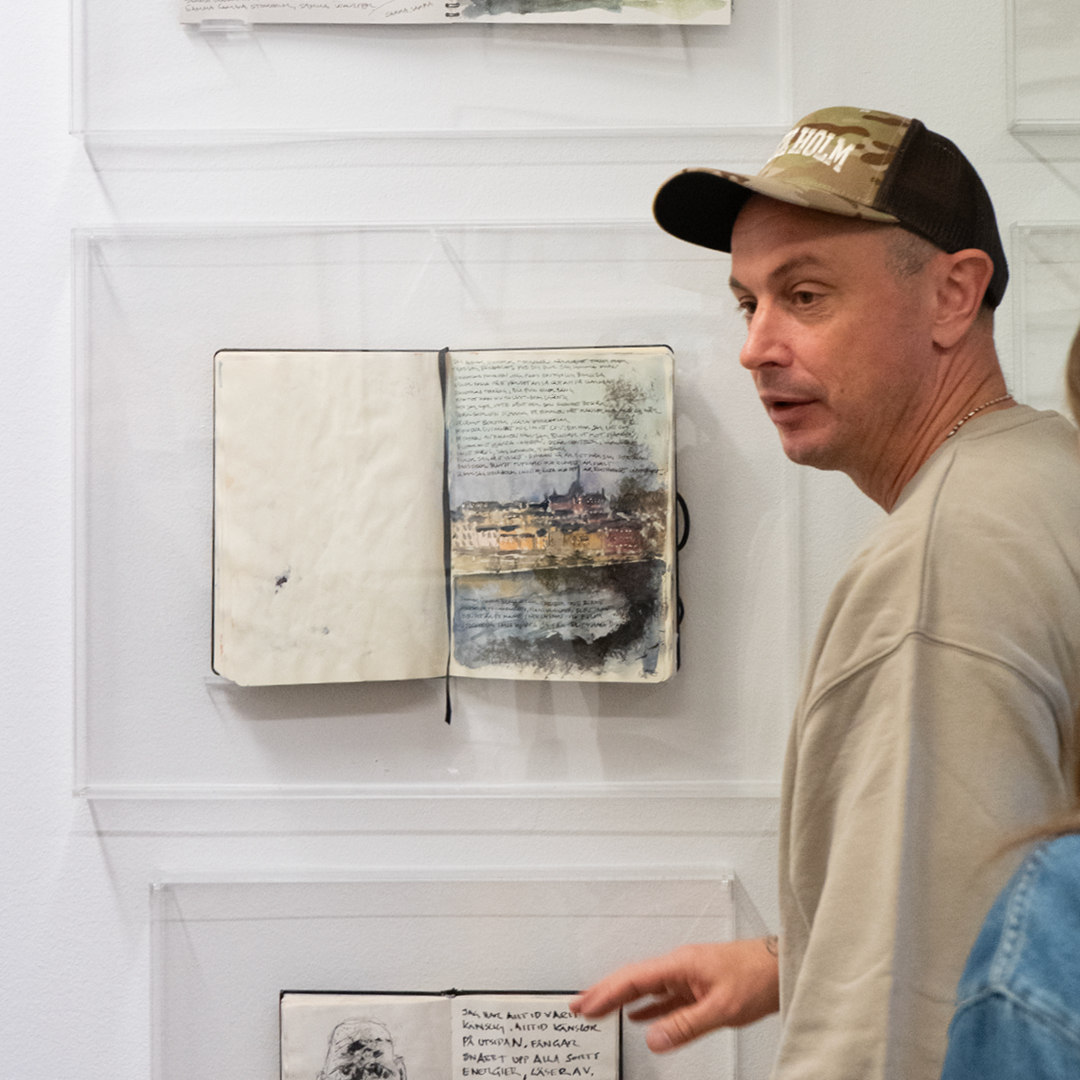
How do you learn new techniques?
I experiment a lot on my own. I also have a sister who’s incredibly skilled in watercolour, and I paint a lot with her. She lives in Gothenburg, and when we spend time together, we paint together. Then I ask my friend Fredrik, who is an artist. He’s the ultimate materials expert and really good with techniques. Sometimes I check out YouTube tutorials, and I’ve read quite a few art books. Especially, I’ve read the classic watercolour books by Arne Isacsson, which are fantastic. They offer a pretty rigorous colour theory. It’s really interesting, but at the same time, I’m completely rebellious towards that as well.
" I don’t think I would even be involved in music if I hadn’t studied art history "
You studied art history at university. Would you recommend it?
One hundred percent. To understand the world, one should study literature or art history. I don’t think I would even be involved in music if I hadn’t studied art history; I became incredibly inspired by it. It’s a fantastic education. I got into it without knowing what I wanted to do in life, thinking that I’d probably become a museum guide. But the fact is, many of my classmates have gone on to hold impressive positions. One ended up at the top of the Moderna Museet, and another works at Bukowskis. Everyone is involved in art in some way or with this form of expression. There’s a really great podcast called Konsthistoriapodden, hosted by two girls in Gothenburg. I’ve been a guest on it, and we talked about wine and art. They’re really talented.
How do you pass on creativity in your family?
That’s a really good question. Today, we’re in a bit of a trench warfare situation with the kids and their screens. I especially have two smaller kids who think it's a lot of fun to paint and draw and we have a studio where we live, so I take them there. They can sit for anywhere from one to two hours, really focused on their art. The funny thing is, they’ve become such paper snobs that they only want to use expensive paper. It doesn’t really work if I bring some A4 copier paper. Sometimes they’ll just make five strokes and call it finished. Just like my dad, I save everything they create. So, to answer your question, we do a lot of painting with the two little ones. Sometimes my oldest daughter, who’s 15, joins us as well.
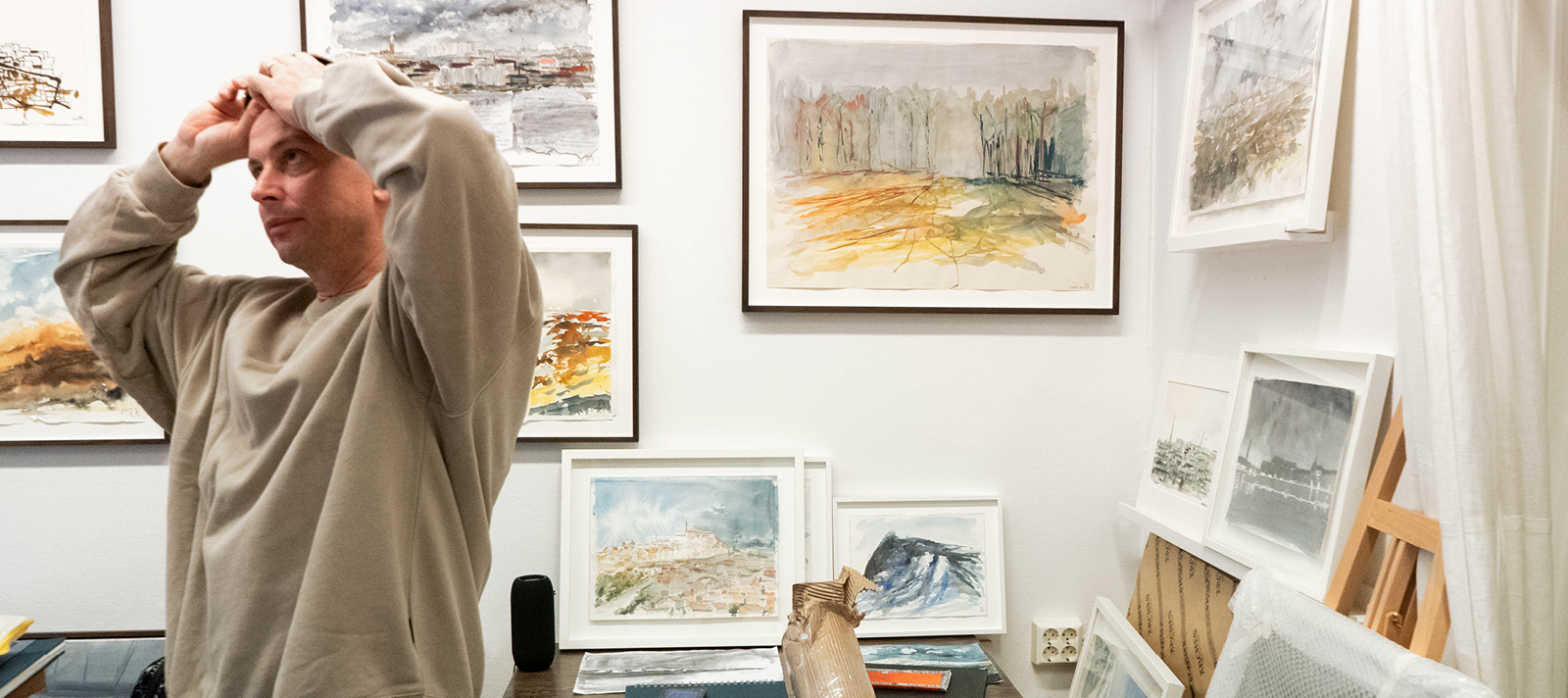
How do you price your works?
I started with some sort of pricing structure, and as more people began to buy my art, I gradually increased the prices. I also adjust the prices based on material costs. I've had requests to create lithographs and similar works, but I don’t do that—no prints. Everything is original. If it’s a painting, there’s only that one piece, which I think is great. I’m not out selling all the time; I make a few sales here and there. The hope is to eventually make a living from it. So far, it’s going well, and above all, it’s so much fun.
And how is it to sell your art today?
In the past, galleries were the gatekeepers and provided some sort of quality stamp. That’s not really the case anymore. It’s similar in the music industry. Back in the day, we had record labels. If you weren’t signed, nothing happened. Nowadays, a rapper like Ant Wan, who doesn’t have a record label, can sell out Tele2 Arena. It’s absolutely crazy.
My big problem is that I’m a bit of a hoarder. I have a lot of separation anxiety when it comes to letting go of my paintings, they're like my darlings. But sometimes there’s a piece that I don’t really think is that great, and then someone wants it. That definitely makes me really happy.
How do you think about framing your works?
I have the best framer in the city right across the street, Ramverkstan. They’re incredibly good and do a fantastic job. I’ve invested a lot in it. It’s not factory-made frames, they’re handmade with artist glass, not 70% but 90%! It’s the top of the line. The great thing is that it protects the watercolour, as it can fade over time, and there’s less glare when you photograph it. There’s a little glare, but not nearly as much as with regular glass. I frame things that I like and keep what I don’t sell. Some pieces I bring out later and use again. I’m a bit more selective with framing now. There was a time when I framed a lot because I thought it looked really nice, and a piece does pop more when framed. But now I try to be more deliberate, especially since framing can be so expensive.
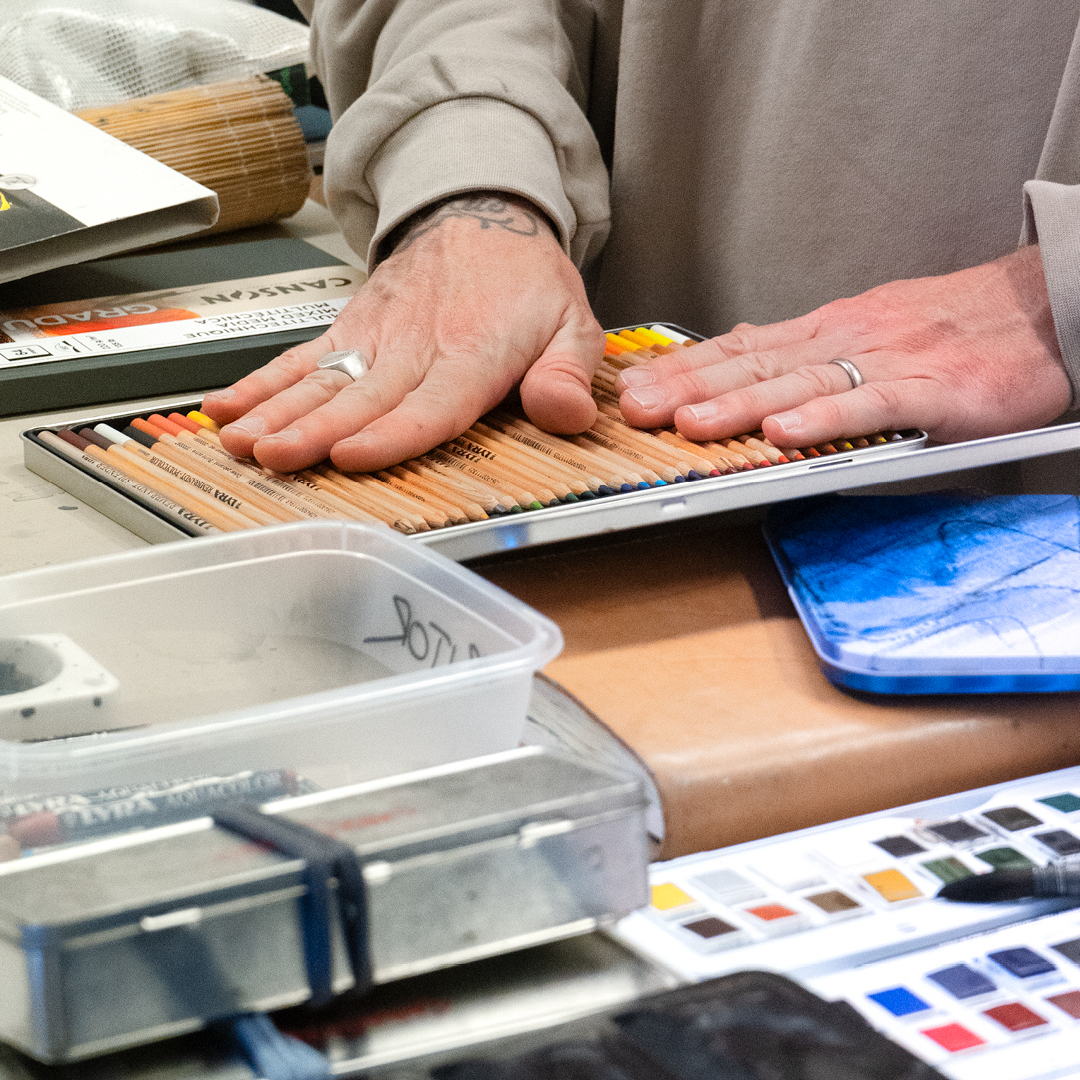
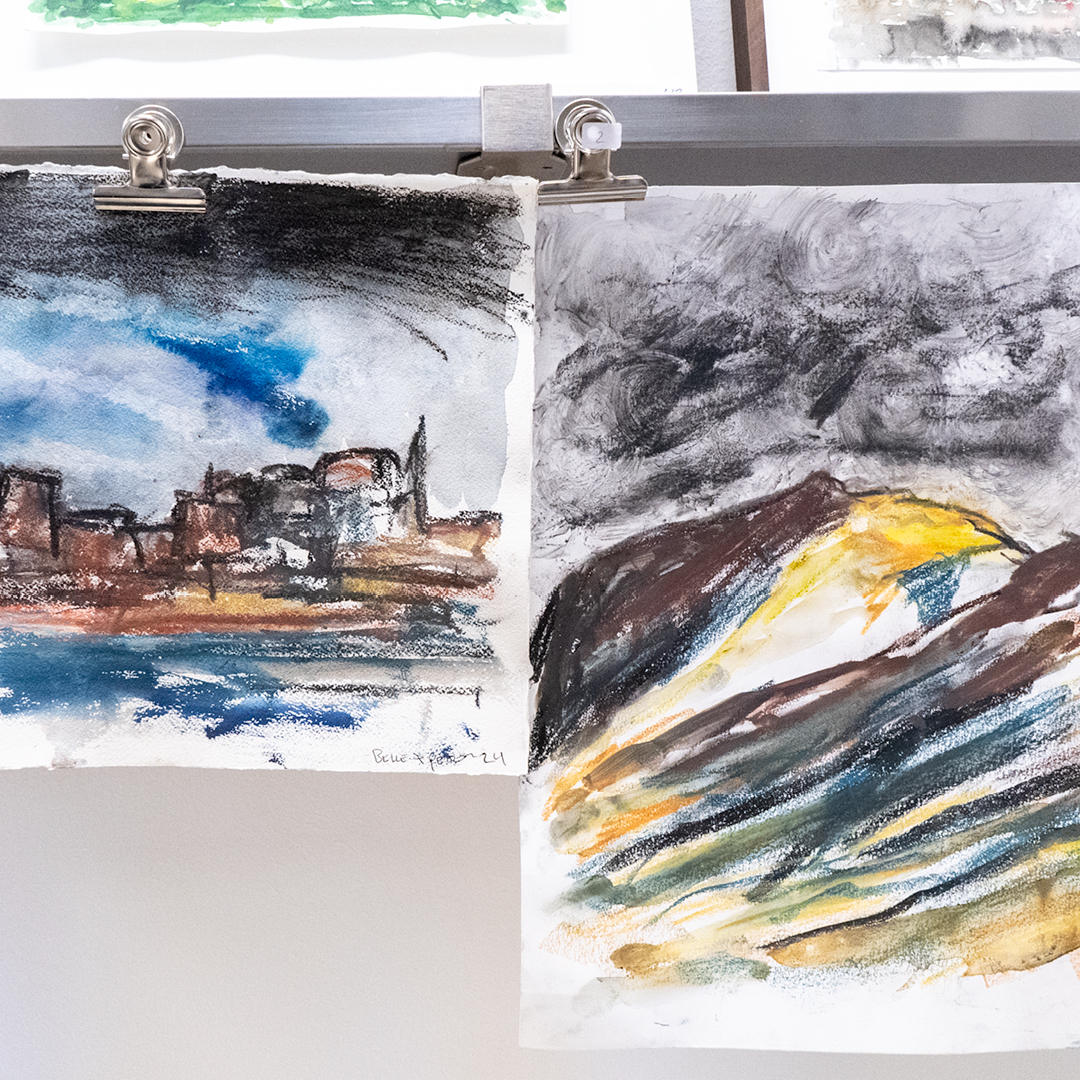
What’s next? Any exhibitions coming up?
I’m going to have a pop-up exhibition here in my studio on November 17th. I’ll be taking in 25 people at a time. I’ve done this two or three times before, and it’s worked really well. In addition to that, I have a few other things lined up, including an exhibition in May in Kalmar.
"The art feels so real to me"
What do you like about the expression you’re currently working with?
I think painting is the most genuine form of expression right now. It can’t be influenced by the times we live in, unlike music, which can be affected by AI. I can’t say that it will never happen to art, but it feels like it’s difficult to replicate. The art feels so real to me. It’s all about the genuineness of the creation, and that it can’t be copied or plagiarised. I think that’s one of the reasons why I’ve gravitated towards it so much over the last ten years.
 Ireland (EUR)
Ireland (EUR)
